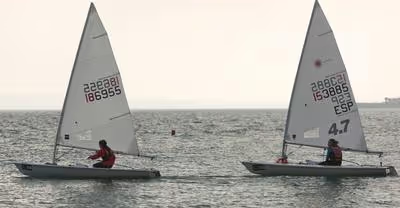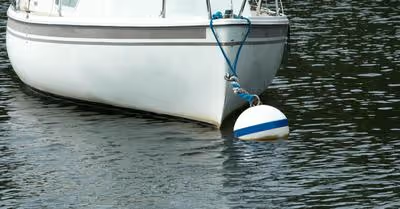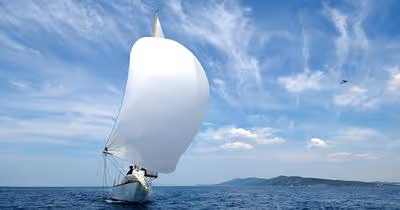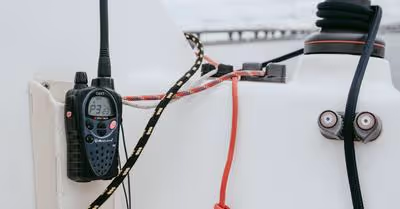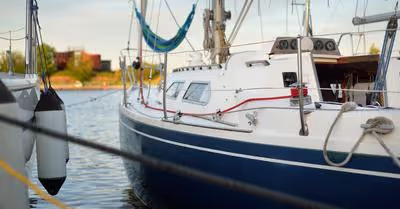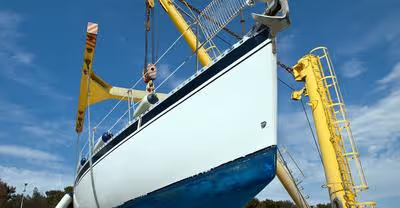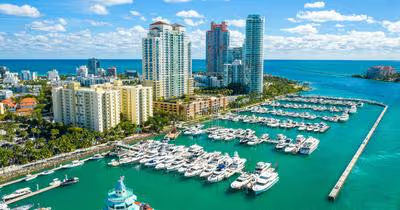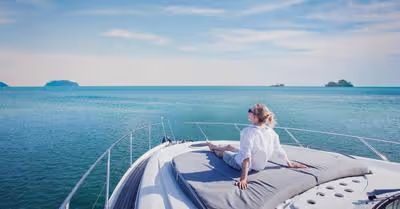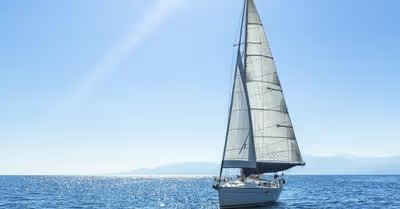Table of Contents
The Viking Ships
Even though the Viking civilization was at its peak during the medieval era, their ships were pretty advanced. Notably, this was a time in human history when sails were regarded as the epitome of human technology. Not only were ships critical to the Vikings, but their ships also helped leave behind a historical legacy in the world of sailing.
The most common Viking ship, and the one most often associated with the Vikings today, was the longship, or longboat. The longboats were made from sturdy wooden planks that were held in place using iron rivets. Further, these vessels featured elaborate carvings on the exterior hull and, depending on the specific symbolic value of a particular ship, were highly decorated.
Notably, although the long and narrow shape of the Viking longboats made them quick-moving through the water, they came with a significant disadvantage. More specifically, this shape provided a limited cargo capacity, and it is estimated that they could only carry a week's supply of cargo onboard.
However, historians have pointed out that for the Vikings' longer voyages to England, Iceland, or Greenland, the Viking ships had to accommodate up to 80 people and over a week's cargo supply.
The Importance of Sails for the Vikings
Without a firm grasp over the production and usage of sails, the Vikings would have found it extremely challenging to traverse the oceans as they did. Invented just before the age of Viking exploration in the 7th century, sails were one of the most critical and advanced technologies of the day.
As sailing enthusiasts, we are no strangers to the many benefits sails have for an ocean-going vessel. While oars had been in use for almost a thousand years (or maybe more) by this point to improve maneuverability, sails made Viking boats highly advanced in comparison to other ships of the time. Accordingly, they made the Viking ships faster, more accurate, and highly maneuverable.
The Vikings' sailing ships were designed for long voyages, but more importantly, they were designed to withstand some of the fiercest storms. Therefore, the Vikings made ample use of their advanced technology to travel to different parts of the world for trade, war, or exploration.
Viking Navigational Methods
Being excellent boat builders is only half of the Viking story. For to traverse long distances across the oceans as they did, often in foul weather, they also had to be incredible sailors. Today, we are blessed with GPS technology to help ocean-going vessels navigate through the seas. Before GPS technology, humans used magnetic compasses, sextants (for celestial navigation), charts, and maps.
However, it is worth noting that the Vikings did not even have recourse to these basic navigational technologies during their era. They had to rely on entirely different methods to keep their vessel on track, especially when they needed to navigate around a rough patch at sea arose, as it must have many times.
If the Vikings were sailing close to the shoreline, they would use coastal landmarks as navigational aids. Another technique would be to note the sun's position between two mountains on the coast and derive their location and heading from that. Moreover, the Vikings had a few more innovative navigational tricks up their sleeves. They often used the movement patterns of migratory birds to figure out where they were at sea.
At other times, particularly during stormy weather, the Vikings would island-hop on the way to their destination, allowing them to be within sight of well-known landmarks. To put it differently, the Vikings had essentially mastered the seas, using natural signs and patterns such as the sun, clouds, stars, animals, and sea creatures as well as the behavior of the wind and water, to figure out where they were and which way they were heading.
The Vikings' mastery over predicting the behavior of the sea also enabled them to choose the right time to set out on a voyage and the right time to head for an island. The Vikings also held a great deal of value in their society for any sailor who had first-hand experience sailing to a particularly desirable destination, such as England.
The Viking Voyage to England
Due to the exclusive use of sails for ocean voyages during the Viking era, the sailing time for any given stretch of ocean was quite variable. This is because the sailing time was largely dependent on the wind direction and the strength of the wind.
Historians know many cases where the Vikings spent weeks out at sea due to strong winds blowing against their direction of travel on a voyage that would have otherwise taken a few days. Since strong winds cause large and unpredictable waves, the Vikings would have had to slow down or stop entirely if faced with foul weather during a voyage.
The voyage to England from Scandinavia would have taken the Vikings between 3 and 6 days to complete in favorable weather and sea conditions. However, if they were confronted with bad weather conditions during the voyage to England, they would have lost their bearings and found it challenging to continue towards their target destination. In this case, they would have had to island-hop and stay at one place for some time until the conditions became favorable once again.
For example, on their way to England, the Vikings would have most likely stopped over in Fjords to wait for any bad weather or sea conditions they faced to calm down. In conditions like these, it would have taken the Vikings weeks, rather than days, to sail to England.
For argument's sake, let's say that the Vikings sailed to England during favorable weather and sea conditions. With strong winds blowing the ideal direction, the Vikings would have sailed for 200 miles from Roskilde to Norway in a single stretch at an average speed of 8 knots, taking them around 3 days. However, if the weather conditions changed by the time they reached Norway, they may have had to stay on land for approximately 10 days.
Upon departing from Norway in favorable conditions, the Vikings would have spent a day sailing along the Norwegian coast, after which they would have spent around 36 hours sailing in open waters from present-day Bergen to the Orkneys. A few more days of sailing along the Scottish coast would then lead them into the Irish Sea before going down to present-day England, what was then known as Northumbria.
During most of their voyages, the Vikings' journey would have been markedly slowed by the fact that they would sail in convoys or fleets. At times, they could travel in stages and rendezvous at specific pre-established points before making the final leg of the journey to England.
The Viking voyage to England must have been exceptionally arduous and challenging, especially given that weather and sea conditions off the Isle of Man are subject to rapid change.
The Sailing Legacy of the Vikings
There is no doubt that sailing was pivotal to Viking society and crucial to the legacy they left behind. Through their mastery over the seas, the Vikings were able to establish trade, communication, explorations, and conquests, thereby allowing them massive overseas influence at a time when this was the norm for only the wealthiest societies.
Without their boat-building, sailing, and navigational skills, the Vikings never would have established the overseas influence that made them so well known throughout many foreign civilizations of the day. What's more, it was their exceptional expertise at traversing the seas that allowed them to colonize and settle in Greenland, Iceland, and the British Isles.
Their sturdy yet quick and highly maneuverable vessels played a crucial role in the socio-political climate of the Vikings' day and age, making them as ready for war as they were for trade. Through their mastery of sailing and the seas, the Vikings were able to leave behind a legacy that forces us to investigate their sailing activities to this day.
Recent Articles



